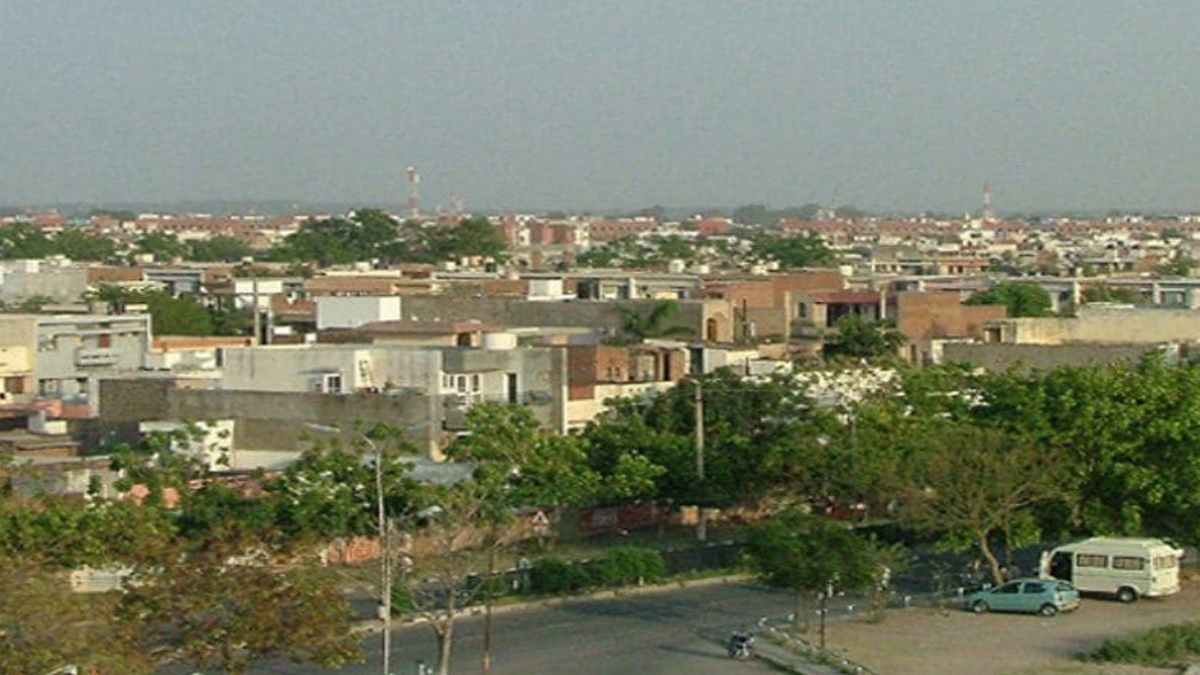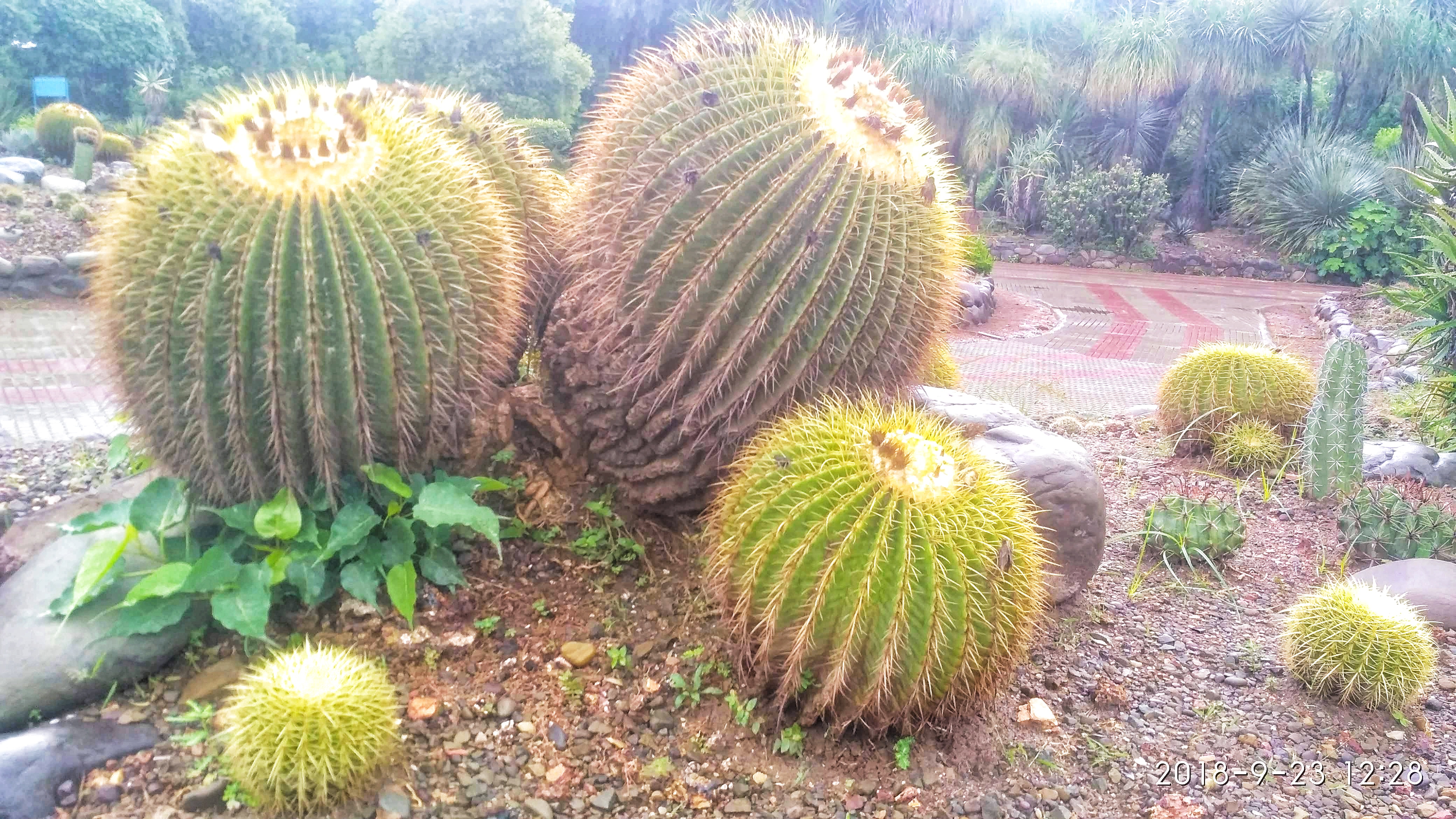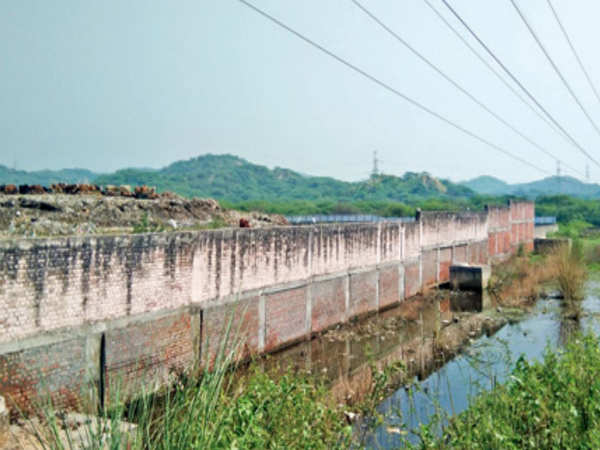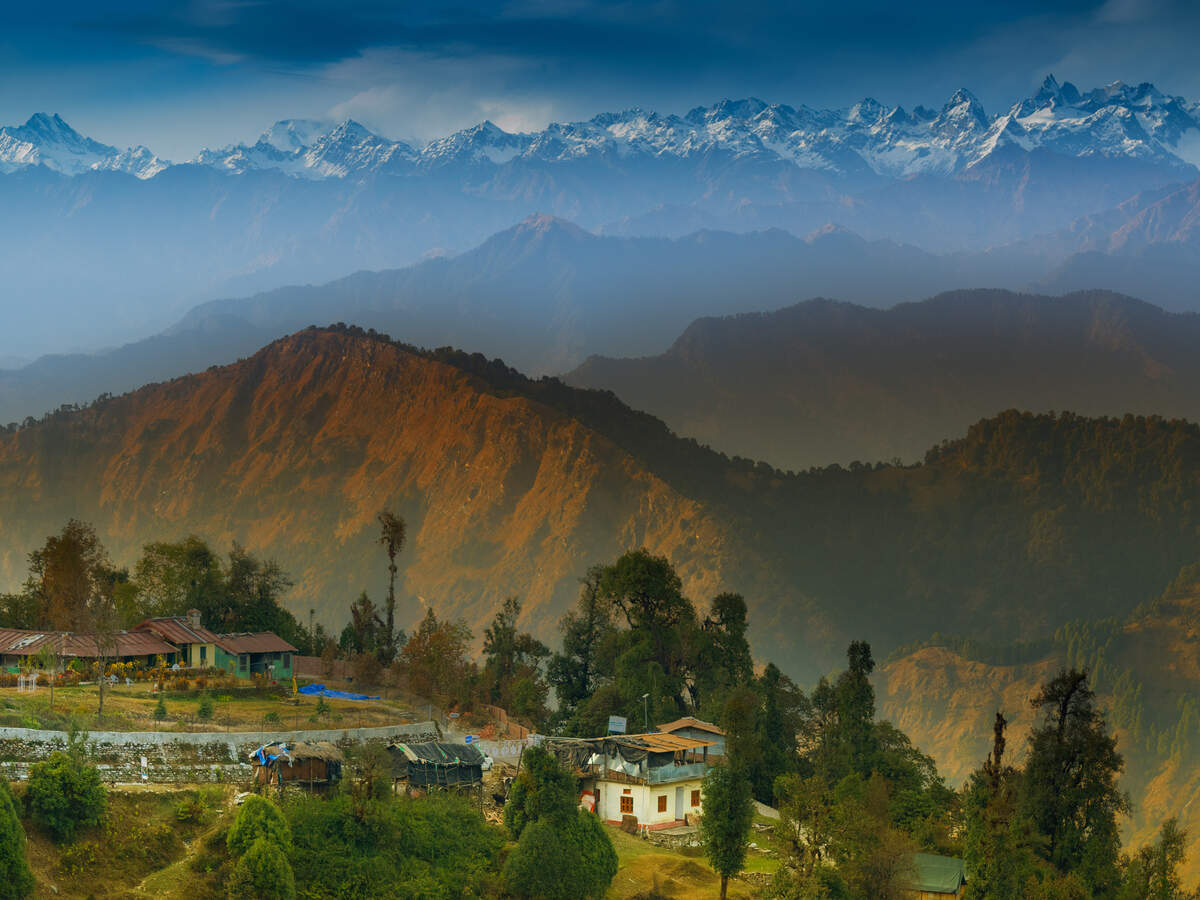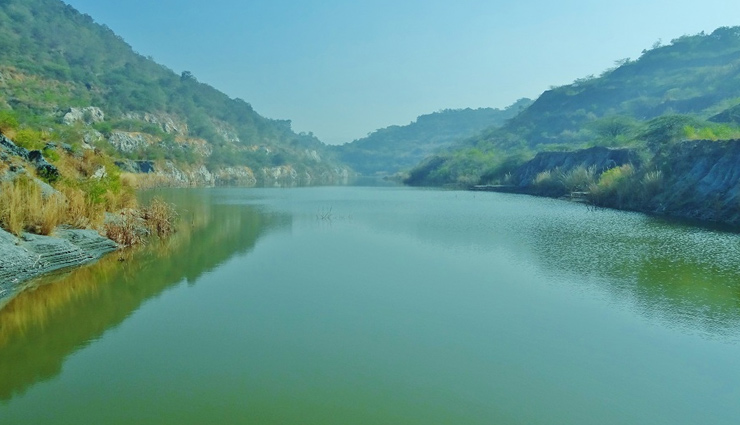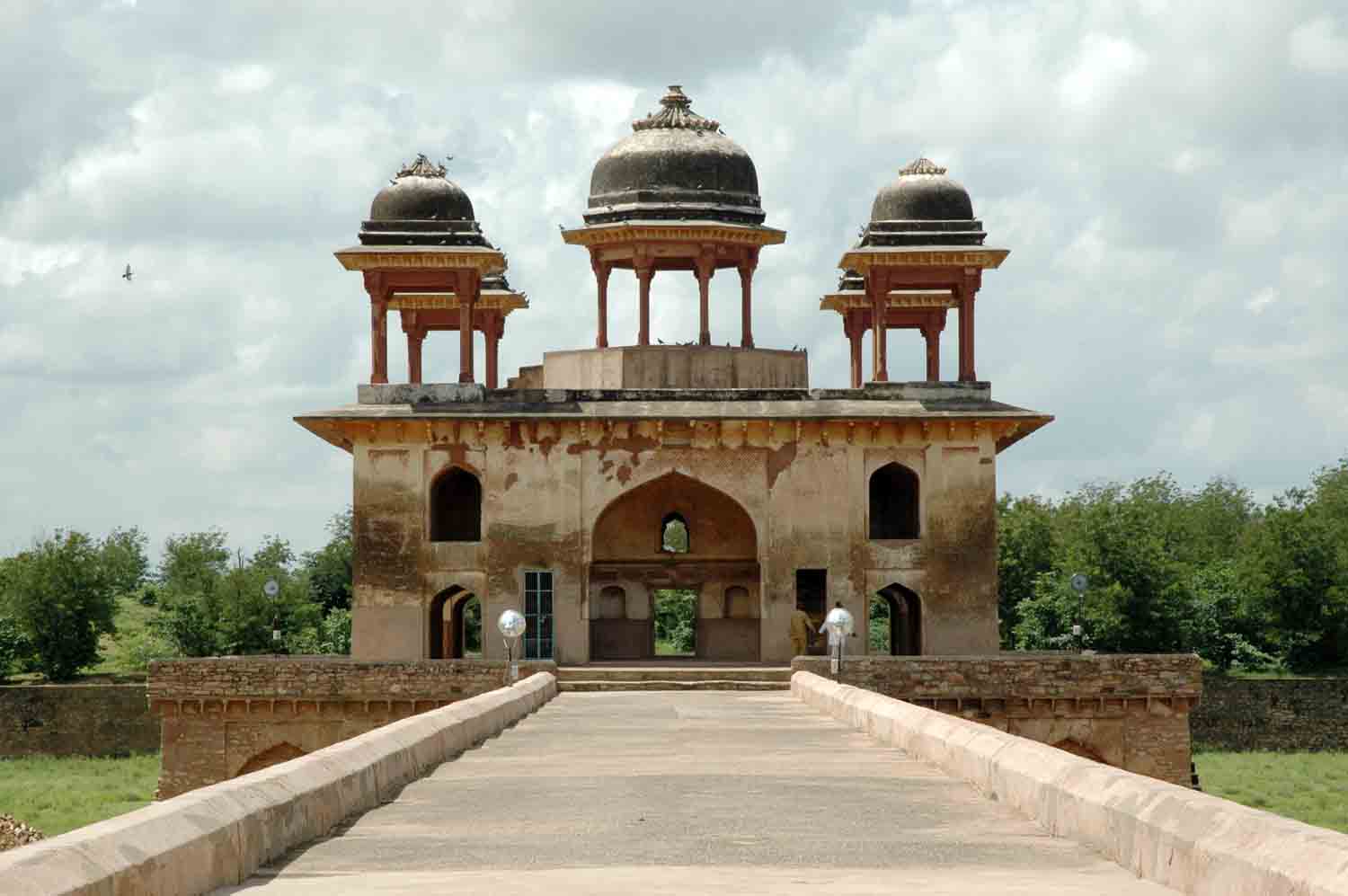Panchkula
A planned city, Panchkula lies on Haryana’s border with Punjab and is part of the Chandigarh capital region or Greater Chandigarh. The Chandigarh-Mohali-Panchkula metropolitan region collectively forms a Chandigarh Tricity, with a combined population of over 2 million. Panchkula lies about 48 km north of Ambala. It forms a part of an adjoining area to the Chandigarh, Mohali and Zirakpur and is about 4 km southeast of Chandigarh. It is a planned city like Chandigarh, with a sector system. The city hosts the Chandimandir Cantonment, the headquarters of the Western Command of the Indian Army.
The origin of the name Panchkula is derived from the local word panch which means five and kula which means canals and so Panchkula is the city of five canals, possibly referring to the five irrigation canals that distribute water from the Ghaggar River and pass through the Chandimandir Cantonment area to the Mata Mansa Devi Mandir area.
The Ramgarh Fort, with the tallest door in the country, was built by Raja Ram Chander, the ruler of Kahlur State, the headquarter of which was in Bilaspur in Himachal Pradesh. The king of Bilaspur built the Ramgarh Fort about 360 years back and in 1687, its rulers offered Guru Gobind Singh a horse, a sword and Rs 500,000 when he was relocating his troops from Paonta Sahib to Anandpur Sahib after the Battle of Bhangani. In the 1750s, it eventually fell to the status of a fief under the Sirmur State but became independent in 1804. Located on the top of a hill with amazing views of the Shivalik Hills, the fort is today run as a heritage hotel.
The Mata Mansa Devi temple is dedicated to the Goddess Mansa Devi, a form of Shakti. The temple complex is spread over 100 acres and is one of the prominent Shakti Pitha temples of North India. Thousands of devotees visit the shrine from various parts of the country, especially during the Navratra fair when the number rises to hundreds of thousands of devotees every day for nine days. The Patiala temple, constructed in 1840 by the Maharaja of Patiala lies within the Mansa Devi temple complex. Nada Sahib is a Sikh Gurudwara located on the banks of the Ghaggar-Hakra River in the Sivalik Hills.
Also known as the Yadavindra Gardens, Pinjore Gardens are about 20 km from Panchkula and cover a total area of 100 hectares. It is a beautiful Mughal Garden from the 17th century. The gardens are a good illustration of terrace gardens in India. Pinjore Garden is designed in the Charbagh Pattern and is built in the traditional Mughal style. The area is designed to have terrace gardens, grand pavilions and beautiful fountains with a total of seven terraces in the garden that are built descending into a distance. There is also an open-air theatre at the end of the garden as well as a central watercourse that flows in the middle of every level, shimmering fountains, several other pools and arched balconies amidst colourful and fragrant flowerbeds and lush green lawns. The seven terraces have several architectural structures that have been built on each level. The first terrace is the highest that has a palace built in the Mughal-Rajasthan style of architecture called the Shish Mahal. There is also a Hawa Mahal on this level. The second level has arched doorways along with the painted palace or the Rang Mahal. The third level only has flower beds and cypress trees leading to the orchards. The fourth level has the palace of water, the Jal Mahal, with a platform to rest and a fountain bed. The next two levels have more trees and fountains, and the last level has the open-air theatre. During Baisakhi, between April and June, the Garden serves as the venue of the annual Mango Festival. There is also a mini zoo, an area dedicated to historic places, a serene Japanese garden, a splendid nursery and some areas that serve as picnic spots. Many believe that the Pandava brothers rested her for a while during their exile. The best time to explore the gardens is in the evening when it is lit up after sunset. The Pinjore Heritage Festival is celebrated every year in December as a tribute to the Mughal Gardens when the gardens are illuminated with lights and evening performances are arranged and competitions are held. The Kaushalya Dam is an earth-filled barrage dam on the Kaushalya river in Pinjore. It is an important wetland that is home to many endangered migratory birds.
The National Cactus and Succulent Botanical Garden and Research Centre is a 7-acre cactus garden that was established in 1987 and is known for its rare and endangered species of Indian succulent plants. This is the largest cactus garden in the world.
The Khol Hi-Raitan Wildlife Sanctuary is located about 18 km east of Panchkula and was notified as a wildlife sanctuary on 10 December 2004. It is spread over an area of 4.9 sq km as well as a 1.3 sq km eco-sensitive zone around the sanctuary. The Khol Hi-Raitan and Bir Shikargah Wildlife Sanctuaries are only 3 km from each other, as the crow flies and both are also only a few km away from the Kalesar National Park, all of which lie in the Shivalik Hills. All these sanctuaries have similar species of wild animals. The Bir Shikargah Wildlife Sanctuary is located about 19 km from Panchkula and is spread over an area of 1.9 sq km. It also houses Vulture Conservation and Breeding Centre and was notified as a wildlife sanctuary on 29 May 1987. It was declared an Eco-Sensitive Zone or ESZ, as a result of which development would not be permitted within a 5 km radius.
Morni Hills
An offshoot of the Shivalik Hills, Morni Hills lies about 20 km east of Panchkula. The hills were named after Queen Morni, who is said to have ruled this city. Haryana’s only hill station, Morni Hills is a popular picnic and weekend destination for locals and tourists alike. The hills are 1,220 m in height and have some stunning views to offer. In addition to being a grand vista point, Morni Hills is also an important archaeological site where carvings dating back to the 7th century have been found in the Thakur Dwar Temple. It is also a great place to engage in trekking and birdwatching.
There are two lakes here as well which are interconnected despite the existence of a hillock in between, such that the water level in both of them remains the same. The lakes are believed to be auspicious and are a focal point during celebrations. The lake has a boating facility that will take one on a tranquil excursion across the hills. The remains of the Morni Fort are present close to the hills as well. There is an adventure park nearby that provides activities options like rope climbing, commando nets, Burma bridge, rappelling, and rock-climbing. One can also find a treehouse with fountains and a cafeteria as well as several swings and rides for children. The park’s entry fee is INR 50 for adults and INR 30 for children under 10 years of age.
Narnaul
Not very far from Haryana’s border with Rajasthan and about 130 km southwest of Gurgaon, the historic town of Narnaul claims to be one of the important seats of the Dwapar Yuga of the Mahabharata.
Claiming hybrid architectural influences of the Mughals, Rajputs, Persians and the British, Narnaul is famous for its many tombs and historical sites that date back to the Mughal and Rajput era, followed by the rule of Prince of Jaipur and Patiala. Also famous as Birbal’s birthplace, one of the Ministers or Navratnas in Akbar’s Court, Narnaul is also the birthplace of Sher Shah Suri, the Afghan king who shook the foundations of the Mughal dynasty. The famous Ayurvedic blend, Chyavanprasha was first made in Doshi, a sacred hill just 8 km away from this town. The Battle of Narnaul, also called Battle of Nasibpur was fought on 16 November 1857, between the British Raj and Indian natives during the First War of Indian Independence and was one of the most ferocious battles of the First War of Indian Independence.
The Nivajpur Fort, built by the Mughal Jagirdar or feudal lord Nivaj Ali at Nivajpur village 10 km from Narnaul, has 3 ft wide and 20 ft high stone walls. It had a system of wells, warehouses, stables and a 42 ft wide gateway, all of which now lie in ruins. Situated 8 km off Narnaul’s centre, Dhosi hill is famously known for being the origin of the famous Ayurvedic concoction, Chyavanprash made by Chavan Rishi. The Tripoli Gateway consists of three gateways, hence the name. The edifice was built using red and grey sandstone in the shape of an octagon in 1589 by Shah Quili Khan.
A temple dedicated to Lord Shiva, Modawala Mandir is located on the Narnaul-Rewari road. Built by Raja Naun Karan, a great devotee of the Goddess, the Chamunda Devi Mandir lies in the heart of the town. The temple was decaying and lost for several years during the Mughal rule but was rediscovered by the local people. Dedicated to Lord Hanuman, the Khalde Wale Hanumanji temple was built during the Mughal era in Raghunath Pura. Special pujas and aartis are organised here every Tuesday attracting devotees in large numbers.
Dedicated to the saint Hazarat Turkman, who lived in the area during the 12th century, the original tomb of Pir Turkman is covered by a large dome, giving it a mosque-like appearance. The British later built a verandah along the opening giving it a grand look. Situated close to the tomb of Pir Turkman is the tomb of Ibrahim Khan Sur. It was built by Sher Shah Suri in the memory of his grandfather, who was a ruler of Bengal. The tomb was designed and built by the Sher Shah’s architect, Sheikh Ahmad Niyazi, in the Pathan style. Situated close to Ibrahim Khan’s mausoleum, the Tomb of Shah Wilayat is more of a large complex in the Tughluq architectural style. Also called the Chatta Rai Bal Mukund Das, it was built by the Diwan of Narnaul during the reign of Shah Jahan. It is a five-storey building with several halls and pillars located within the building complex. Shah Quli Khan’s Tomb is the resting place of Shah Quli Khan, the governor of Narnaul. Built in the 16th century, it is one of the few examples of Mughal architecture in Narnaul. Shah Quli Khan was the Mughal governor of Narnaul during the reign of Akbar and the tomb was commissioned by him during his lifetime and remained part of his estate. The two-storeyed octagonal tomb is set on a raised platform with black and yellow marble, along with red sandstone. To the West lies a large gateway leading to the tomb, known as Tripolia Gate. The tomb of Shah Quli’s brother Islam Quli Khan is situated at a small distance from this tomb, to the northeast and is a brick building with little architectural significance.
Chor Gumbad built by the Afghan ruler Jamal Khan, is a large square-shaped structure, with each corner consisting of a minaret and signposts marking the beginning of Narnaul. The place later served as a hide-out for thieves, and hence the name.
Jal Mahal or the Water Palace is a late 16th-century palace, fortification, and artificial lake built by a Mughal governor of Narnaul and currently serves as a tourist attraction. Jal Mahal was built in 1591 by Shah Quli Khan, a member of the nobility of the Mughal empire and the governor of Narnaul. Khan began by creating a square artificial lake with an island in the centre that was intended to form a second Kausar or the Pond of Abundance in paradise for the palace’s occupants. He then ordered the construction of a fortified gateway on the northern edge of the lake, following which a causeway was built out into the centre of the reservoir, where a foundation was laid and a palace built. The palace was decorated in the style of other Mughal palaces and pavilions and the structure was adorned with art and carvings, including inscriptions that celebrated Khan’s famous victory over Hemu. Over the centuries, the palace’s pool gradually filled with earth which was cleared in the late 20th century and the lake restored.
The Nahar Wildlife Sanctuary spreads over an area of 522 acres and was an old pasture land of the Nawab of Dujana. Located about 60 km northeast of Narnaul, this small area is divided into three parts with the Kosli-Kanina road dividing the area of 424 acres into two parts of 331 acres and 93 acres. Another stretch of 98 acres lies to the north of this area which was managed as Reserve Forest before its declaration as Sanctuary in 1987. The Nahar Wildlife Sanctuary is among the last few surviving natural habitats for the Blackbuck in particular and other wildlife species in general. In 2012-13 a protection centre was constructed with an area of around 25 acres fenced.

